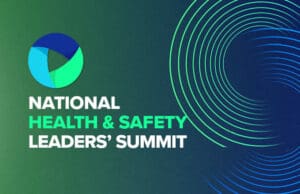
Panel discussion from the National Health & Safety Leaders’ Summit | From Left: Marie Wisker, Partner, Chapman Tripp | Craig Marriott, Principal, Craig Marriott Consulting | Peter Reidy, CEO, KiwiRail | Chris Jones, Director Global Health, Safety & Wellbeing, Fonterra
From Compliance to Critical Thinking
The landscape of workplace health and safety is undergoing a profound transformation, with boards and CEOs taking a more active and engaged role than ever before. Gone are the days of simple compliance checklists; today, the emphasis is on fostering a culture of curiosity, critical thinking, and a deep understanding of operational realities.
This shift was a central theme at the recent National Health & Safety Leaders Summit Panel Discussion, where experts highlighted the evolving nature of governance in this crucial area.
The Impact of Updated Guidelines and Legal Precedents
Recent updates to governance guidelines, coupled with landmark legal cases, are driving this change. “There’s been a huge development since those types of questions to where we are now,” said Marie Whisker, Partner at Chapman Tripp, referencing the shift from basic compliance inquiries to more probing investigations. The updated “Governance Guide to Health and Safety” by the Institute of Directors, WorkSafe, and other organisations is proving to be a valuable tool in this transformation.
The effects of legal cases, such as the one involving the Port of Auckland, are also making a large impact. As Peter Reidy, the CEO of KiwiRail, stated, “It doesn’t matter what you’ve done in the past or where you’re at, you can fall short.” This statement shows the need for constant vigilance.
“Show Me, Don’t Tell Me”: Demanding Concrete Evidence
A key aspect of this evolving approach is the demand for concrete evidence. “Show me, don’t tell me” has become a rallying cry, with boards insisting on verifiable proof of safety measures. Reidy explained how his board now requests to see the actual audits and verification tools being used, rather than just receiving reports.
This emphasis on verification is crucial for ensuring that safety measures are not just on paper, but are effectively implemented in practice.
“It doesn’t matter what you’ve done in the past or where you’re at, you can fall short.”
Peter Reidy, CEO KiwiRail
Cultivating a Culture of Curiosity and Open Reporting
Beyond verification, there’s a growing recognition of the importance of cultivating a culture of curiosity and open reporting. Whisker emphasised the significance of the “five C’s,” particularly curiosity, in driving meaningful conversations about safety.
“We talk about embrace the red,” said Reidy, highlighting the importance of celebrating the reporting of near misses and potential hazards. This approach encourages transparency and allows organisations to learn from potential safety failures.
Focusing on Critical Risk Frameworks
Experts also stressed the importance of focusing on critical risk frameworks. Craig Marriott, Principal at Craig Marriott Consulting, pointed out that these frameworks, when combined with clear strategies, provide a “really defendable position” for organisations.
In essence, boards are moving beyond simply ensuring compliance to actively shaping a safety-first culture within their organisations. This shift requires a commitment to continuous learning, open communication, and a relentless pursuit of safety excellence.



